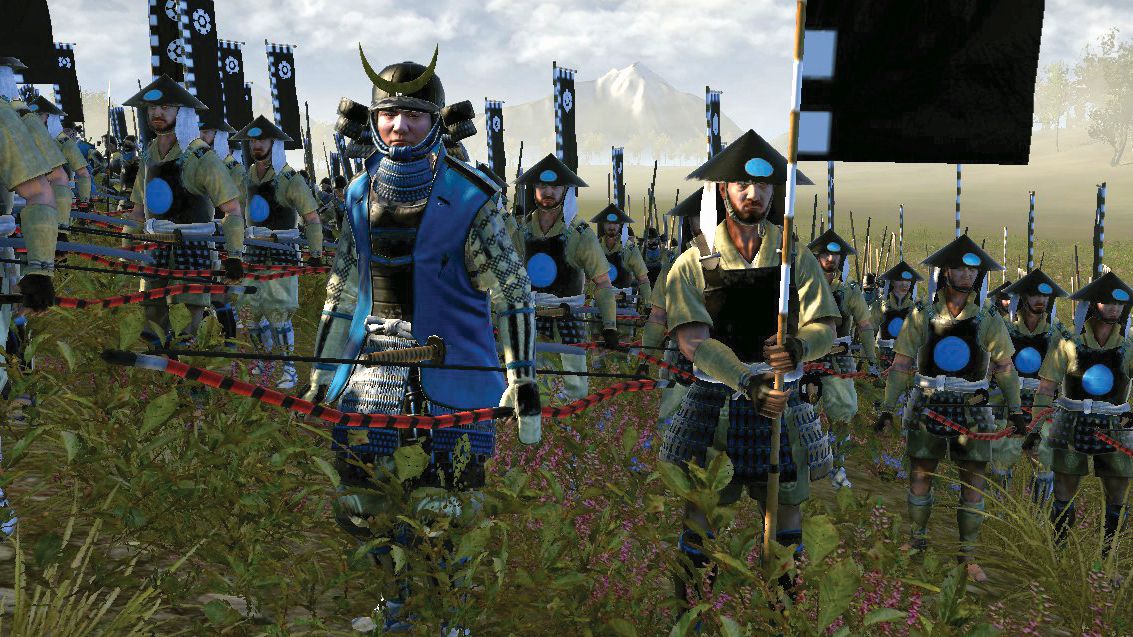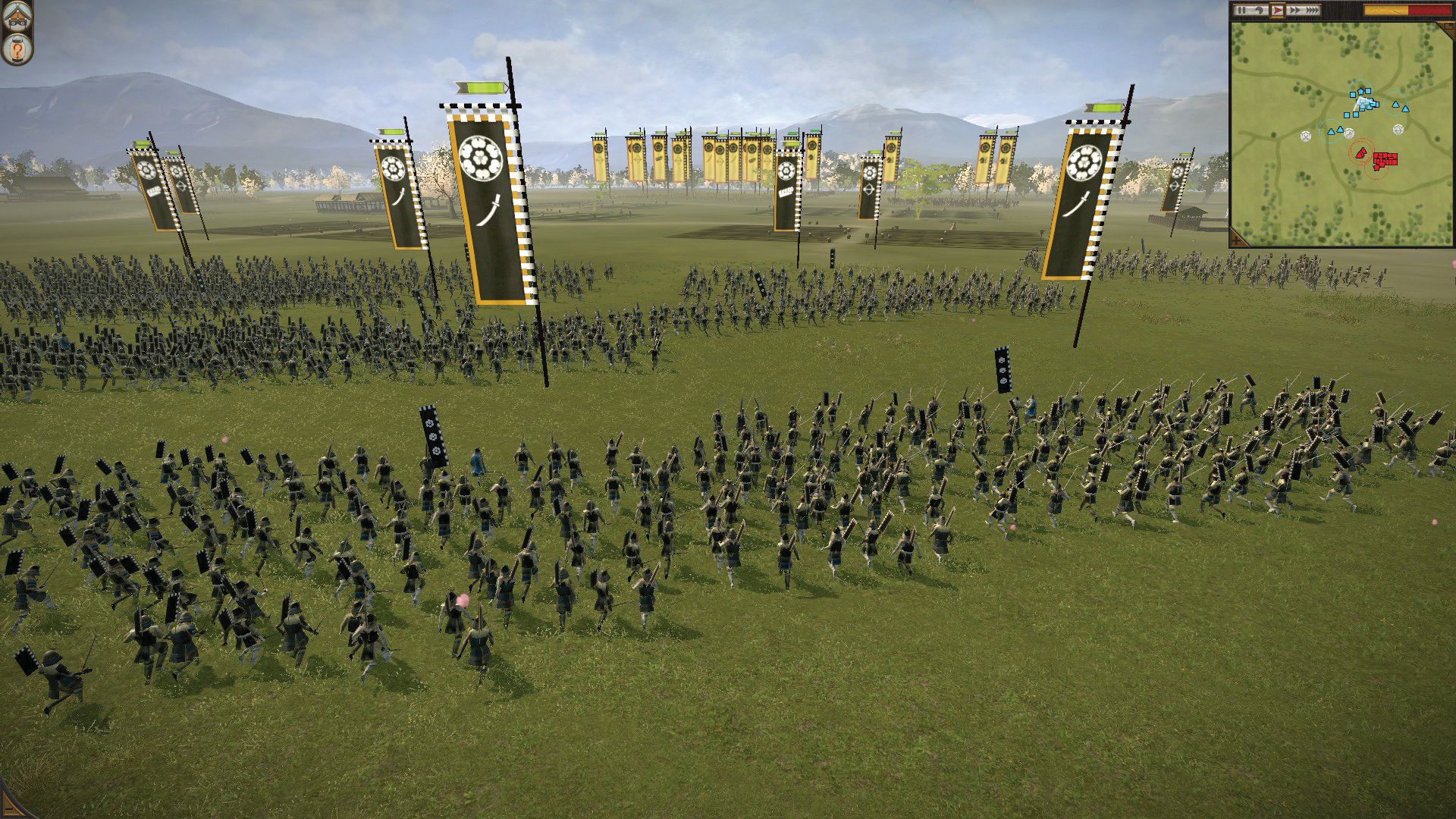Total War: Shogun 2 is still beautiful and ambitious
Command and conquer.

Finding an entry point into the Total War series can feel overwhelming. There’s often talk of historical accuracy or AI failings—some since rectified with patches—and in any long-standing series, the differences between games can be difficult to track. It makes sense then to simply pick a game focusing on the historical time period you’re most interested in. In my case that’s Japan’s Sengoku period.
As I’m fond of saying, while other kids were interested in boy bands and trading card games, I studied the blade via accounts of historical sieges such as the Battle of Kawagoe. Looking at Shogun 2, developer Creative Assembly seems to have been influenced by the same grand tales I enjoyed so much—tales of unlikely odds, loyalty and bravery that get adapted into Japanese television shows over and over again.
While films such as Akira and Lord of the Rings make use of large-scale battles to great effect, up to this point strategy games with their overhead views always made me feel far removed from the action. By comparison Shogun 2’s love for detail feels almost oppressive. Like most Total War games, it consists of two elements: large-scale real-time battles, and a turn-based layer of civic development that takes place on a map of the different provinces. You assume control towards the end of the Sengoku Jidai, when the war was in full swing. Increasingly unhappy with the shogunate—the military government that ruled Japan at the time—clans started to fight each other before setting their eyes on Kyoto, the old capital. You take charge of one such clan.
Choose your clan
There are nine clans to choose from in the base game, each with their own history and characteristics. This translates to different starting positions on the map and a number of unique bonuses. The differences between the factions are fairly minor, since they all belong to one civilisation and thus developed roughly at the same speed. This means you can choose your clan without having to break out a detailed chart of pros and cons before even starting the game. Similarly, thanks to the map spanning just a single country, keeping track of your towns, trade lines and the forces en route to the next enemy is much easier than it was in those Total War games that literally span continents.
That’s the theory, at least. I’m quickly learning that, even with just one island to occupy, things can be a lot. I wanted a more involved strategy, and that’s exactly what I’m given—a game that asks me to seriously consider flanking, and requires that I make sense of divided battlefields in which several armies are fighting for their lives. Be careful what you wish for.
Trebuchets regularly miss and, during my first siege, it’s frankly embarrassing how quickly the rival clan’s archers dispatch my forces. Suddenly, from somewhere, a voice calls out, “Your general is in great danger, my lord!”

General protection
Keeping an eye on your general is vital, as their ability to inspire their troops goes so far that losing them is catastrophic for morale and causes your armies to desert the battlefield in droves. To keep your troops happy you need to coddle your general, like a toddler prone to tantrums, so that he doesn’t defect, for example by making him a commissioner or letting him marry into the daimyo’s family. What the general wants, the general gets. Over time you build up an overview of your general’s character traits and skills as well as a chronicle of your clan, which helps to make it feel like you’re truly roleplaying a daimyo and not just sending lemmings into battle.
Keep up to date with the most important stories and the best deals, as picked by the PC Gamer team.
I like the more personal layer, but it’s also a large source of stress during my first forays into battle. Normally I wouldn’t bat an eyelash at losing units—it’s a war after all—but I’m astoundingly invested in my general, who also turns out to be difficult to track in the midst of all the chaos. Yet do battle I must. It’s my job to take the clans immediately adjacent to my own, but my gradual expansion is regularly slowed by neighbouring clans resisting my efforts, almost as if they don’t want to be occupied.
As soon as I’ve finished a battle, another enemy comes knocking while I’m still in the middle of replenishing my forces and upgrading my irrigation systems to satisfy the people crying out for rice. Normal life doesn’t come to a complete standstill just because you’re waiting for samurai to finish their training.
The civics layer occasionally feels like busywork, because as important as it is to improve the stats of my troops via a skill tree, I get most excited whenever I acquire a new unique unit or successfully pull off small manoeuvres like sending my ninja to assassinate an enemy monk in the night. It’s just more entertaining than sitting in trade meetings with other daimyo. I realise I would’ve loved all this back when I was the kind of player who funnelled all of her time into one game. I would give a lot to have statistics telling me how much time I used to funnel into Starcraft way back when, but now I lack the patience for alliances and playing nice. I’ve become the villain, intent on just taking what she wants.

Thankfully, Shogun 2 excels at the type of grand, Hollywood-style warfare I’m looking for. Get close to your armies and you can relish in the sound of their footsteps across the plains like rolling thunder. There is a lot of walking (good God is there a lot of walking!) but this is the way to enjoy the spectacle. Each landscape has traits that are both beautiful to take in and can affect battles quite a bit. Sometimes it’s nothing more than a rice field, or cherry blossom petals floating in the wind. At other times, it’s a hillside slowing down your advance or a forest hiding enemy troops. These are characteristics of the landscape that Japanese people are very proud of and that I readily associate with the country. Watching soldiers battle each other one-on-one on these fields is as entertaining as it is startling. It’s a real back and forth until suddenly one of them finds an opening. It feels real.
Learning curve
Shogun 2 is a neat package of features. The amount of things to do in a single game and the way they interconnect is a feat I can’t help but marvel at, but it’s a curious mixture of micromanagement and helplessness that constantly leaves me unsure of how well I’m doing.
That authenticity comes with a steep learning curve. From naval battles (which Shogun 2 brings over from Total War: Empire), to the multi-tiered forts, battles in Shogun 2 are about far more than just numbers. Unlikely odds won through clever strategising are what made the most memorable battles of the Sengoku period such standouts.
In Shogun 2, I need to carefully study my units and build a balanced army, yet there are many things I don’t know about the enemy even as I slowly chip away at them with the help of espionage. I enjoy the historic battles the most. I’ve read about them for years, and they have a clearly recognisable strategy to them that my own ad hoc command still lacks, such as Oda Nobunaga taking out small camps one by one before charging at the enemy general at the battle of Okehazama.
Shogun 2 is beautiful and ambitious and varied. It’s already eight years old and doesn’t feel dated at all. Rather, it feels like you could do pretty much anything, and that inspires a level of devotion and time investment that has become difficult for me to justify.

